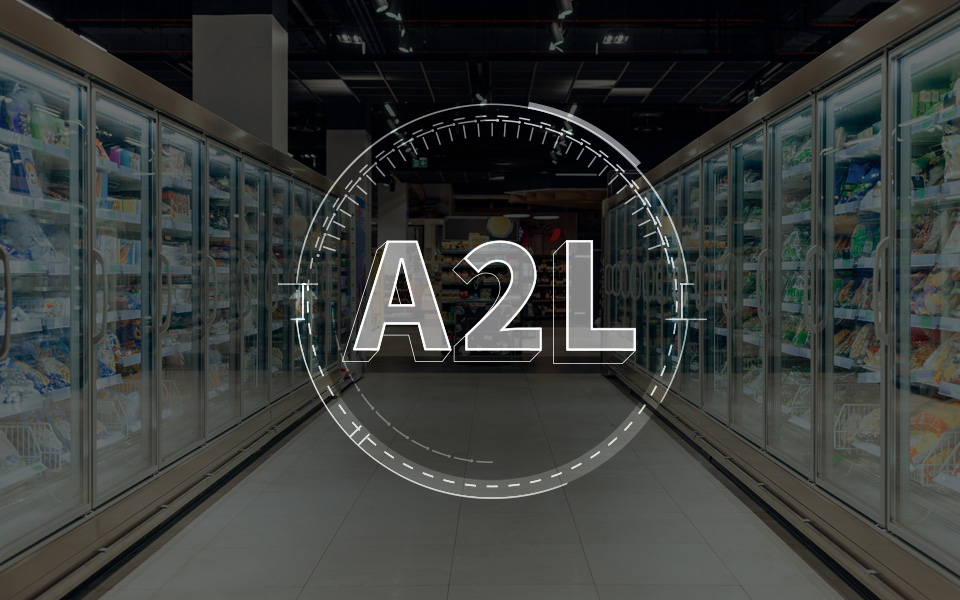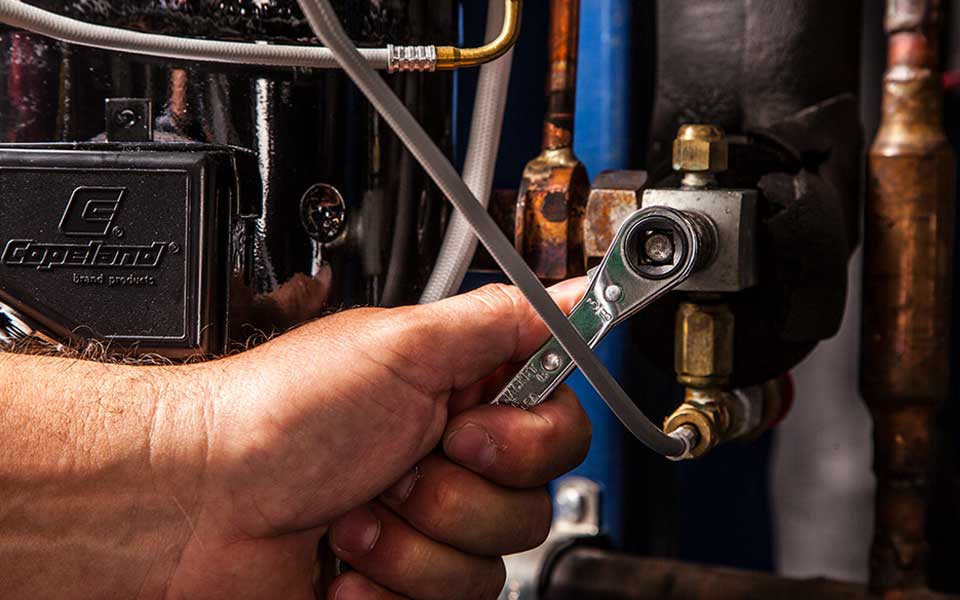Refrigeration basics: Troubleshooting fundamentals

*On June 1, 2023 Emerson’s Climate Technologies business became a new standalone company – Copeland. Though our name has changed, we are building on more than a century of HVACR innovation and industry leadership, and Copeland continues to offer the same products, industry stewardship, and learning opportunities you’ve grown to trust. Information found on this webpage posted before June 1, 2023 may contain our old name or branding, but you can be at ease knowing it was created with the knowledge and expertise of Copeland.
Welcome to the second installment in our new series of blogs intended to help not just beginning service technicians, but anyone who wants to learn more about the basics of refrigeration. I will continue to share insights, best practices and other information from our Emerson training program as well as from our commercial and residential solutions experts. In addition, we’ve created companion videos about each topic that you can cross-reference while accessing other related information at Education.Emerson.com.
In this series, I’ll touch on topics ranging from how condensers, compressors and evaporators work, to superheating and subcooling, to the refrigeration cycle, vapor injection and basic refrigeration system troubleshooting.

In this blog, I explain several key topics related to troubleshooting common compressor issues:
-
- The role of the condenser
- Understanding superheat
- Where to check superheat
- Understanding subcooling
- What discharge line temperature really tells us
- Why compressor overheating is a problem
- How low you can pump a compressor
- The difference between floodback and a flooded start
How condensing removes heat from an environment
When we think of the role of a condenser, we’re essentially referring to the place where heat is rejected in a cooling system. What type of heat is rejected? Well, the motor generates heat, and so does the act of compression. The refrigeration system must also reject superheat as well as the load heat from the evaporator.
As part of the refrigeration cycle, the system also condenses the refrigerant. This process involves taking a vapor, removing the heat outside, and condensing it into a liquid by removing the heat and returning it to its condensing temperature.
You’ll notice on most condensers that the vapor enters at the top and leaves at the bottom, where the liquid is much heavier than the weight of the vapor.
What is superheat?
Superheat is any heat added to a vapor above its boiling point. For example, water boils at 212 oF at atmospheric pressure. The second that last droplet of water evaporates, the temperature rises to 213 oF. That increase in temperature is 1 degree of superheat.
Superheat also is the temperature of the vapor leaving that evaporator on the suction side. A compressor needs superheat in order to function.
Where to check superheat
First, determine what superheat temperature is needed. A system designer more than likely will want to know the superheat leaving the evaporator. If you’re talking to a specialist at Emerson, they’re likely looking for the total superheat or the heat that’s entering the compressor.
Remember that superheat is a vapor, so you can check it on the low side — the evaporator side — of the system. Take a reading of the temperature from the suction line and subtract it from the saturated suction temperature inside the evaporator.
What is subcooling?
Subcooling refers to the heat that is removed from a liquid below its boiling point. For example, if we again use water with a boiling point of 212 oF at atmospheric pressure, its subcooled liquid temperature would be 211 oF.
Subcooling is determined by subtracting the condenser saturating temperature from the liquid line temperature — either leaving the condenser or entering the metering device.
What discharge line temperature really tells us
Discharge line temperature (DLT) is the temperature of superheated vapor leaving the compressor; it can tell us a lot about conditions inside the compressor.
These temperatures are dependent on model, refrigerant type and application. Refer to Copeland for exact specifications
If the superheat temperature is also high, continue moving down the line to check the temperature leaving the evaporator. The high readings could be caused by a malfunctioning metering device, but more often than not, the DLT temperature is too high because of a high compression ratio.
Why compressor overheating is a problem
When compressor temperatures are higher than normal, it’s typically due to a high compression ratio. A high compression ratio indicates either a high head pressure and a very low suction pressure, or a combination of both.
So what are the typical causes of a high compression ratio? Often, it’s due to thinning of the oil inside the system, leading to more friction on moving parts inside the compressor. Friction adds heat, which can increase wear and tear on the parts and lead to premature compressor failure.
Compressors are designed with a thermal operating disc to provide internal protection. However, it’s crucial to monitor the compressor’s internal temperature; always check the discharge line temperature for an indication.
How low should you pump a compressor?
The answer depends on the model number of the compressor, the application and the refrigerant you’re using. Enter these details into the Copeland™ Online Product Information (OPI) website, where you can find the design specifications for the pump down number.
One more important note to remember with respect to pumping: Never pump a compressor down to zero or into a vacuum.
Know the difference between floodback and a flooded start
Floodback occurs when refrigerant leaves the evaporator and enters the running compressor as a liquid instead of a vapor — which can ultimately lead to system failure. Conditions contributing to floodback include air flow, ice buildup, overcharging refrigerant or misadjusted expansion valves.
Symptoms of floodback include overheating from a loss of lubrication and decreased system efficiency. Prevent floodback by modifying defrost cycles, checking refrigerant charging levels, adjusting or replacing expansion valves, and making sure that evaporator coils are cleaned and not damaged.
A flooded start is different than floodback because it can occur when the compressor is not running — and has not been operated for some time. The difference in the temperature (DT) from the crankcase oil, and the vapor refrigerant in the evaporator causes it to migrate towards the compressor oil. There, it condenses into a liquid and is absorbed by the oil. Then, when the compressor is started, the refrigerant boils into a vapor, diluting the oil in the crankcase and reducing the lubrication of bearings, rods and other critical surfaces.
Symptoms include erratic wear or seizure damage to the rods or bearings and the crankshaft. Prevent a flooded start by installing a continuous pump down cycle on the compressor to remove from the low-pressure side. Pump downs would typically not be used in residential applications. A crankcase heater can be installed or the compressor can be located where ambient temperatures are controlled.

A2L Refrigeration Overview — Systems, Safety and Servicing Considerations
by Joe Summers | HVACR Industry & Tech Tips
*On June 1, 2023 Emerson’s Climate Technologies business became a new standalone company –...

Servicing the Next Generation of Lower-GWP Refrigerants
by Joe Summers | HVACR Industry & Tech Tips
*On June 1, 2023 Emerson’s Climate Technologies business became a new standalone company –...

Improve Food Safety by Shifting to Proactive Measures
by Dan Knauer | HVACR Industry & Tech Tips
*On June 1, 2023 Emerson’s Climate Technologies business became a new standalone company –...
The post Refrigeration Basics: Troubleshooting Fundamentals appeared first on Copeland.